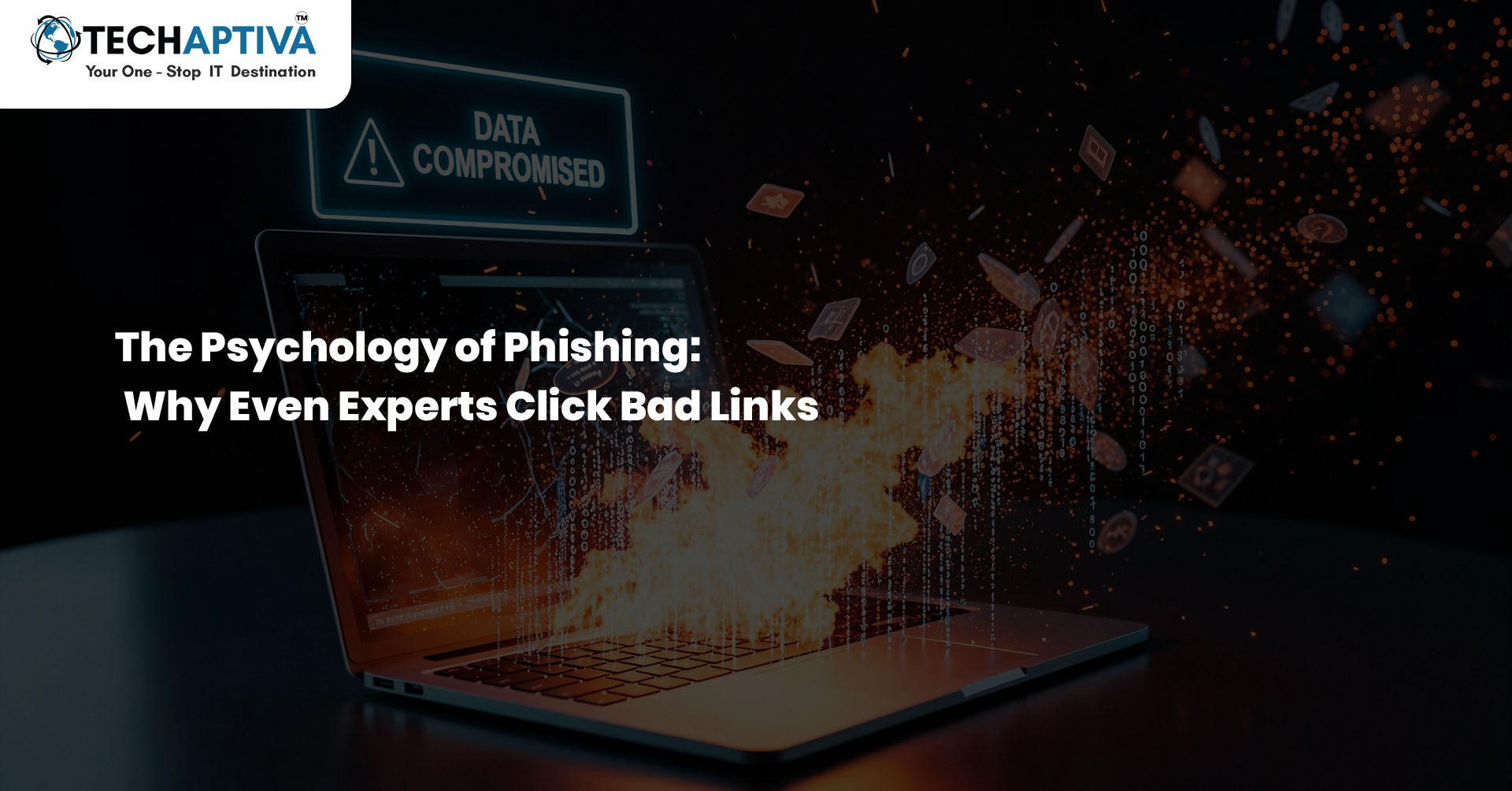The Psychology of Phishing: Why Even Experts Click Bad Links
Why Phishing Outsmarts Even the Smartest Minds
Phishing isn’t a “rookie mistake” problem—it’s a psychological manipulation problem. Attackers don’t rely solely on broken grammar or shady links anymore. Instead, they design emails, texts, and even phone calls that blend seamlessly into a target’s daily workflow. They exploit human cognitive shortcuts, or “heuristics,” that normally help us make quick decisions but can be hijacked to bypass our critical thinking. Studies show that even security professionals with 10+ years of experience have clicked malicious links in controlled simulations when the message was emotionally or contextually compelling. TechAptiva, the best IT managed service in Kochi, has seen firsthand how even well-trained teams can be tricked—and how continuous awareness programs are the only sustainable defense.
The Cognitive Biases Behind Bad Clicks
Every successful phishing campaign is built on psychological levers.
- Urgency Bias: “Your account will be suspended in 2 hours” makes people act before thinking.
- Authority Bias: Messages appearing from a CEO, IT director, or government agency carry weight, making recipients comply without question.
- Scarcity Effect: “Only 3 seats left for your mandatory compliance training” plays on fear of missing out.
- Curiosity Trigger: Subject lines like “Payroll Adjustment for Q4” or “Confidential: Merger Details” entice even cautious readers.
When these biases align with the recipient’s current environment—end-of-quarter reports, benefit renewals, or ongoing project deadlines—the risk of a click skyrockets.
Real-World Cases That Broke Expert Defenses
- The CFO Trap: In 2023, a real estate firm’s CFO clicked a link in an email allegedly from the company’s legal counsel. The message referenced an “urgent acquisition deal” matching real, confidential discussions. The link deployed malware that gave attackers access to sensitive financial files.
- The Researcher’s Mistake: A cybersecurity researcher at a government lab clicked a link for an “HR benefits survey” sent during the annual renewal period. It was a spear-phishing email timed perfectly to the HR calendar.
- The Admin Breach: An IT administrator received a “VPN upgrade notice” with a realistic-looking login portal. Thinking it was a routine update, they entered credentials, giving attackers full remote access to corporate systems.
Why Technology Alone Can’t Save You
Spam filters, link scanners, and endpoint security tools are critical—but they aren’t infallible. Phishing attacks that are well-researched and personalized often bypass technical defenses because they look exactly like normal business communication. The final line of defense is the human mind, which is also the most vulnerable target. If a user trusts the message before verifying it, no amount of firewall rules can stop the click.
Building Psychological Resilience Against Phishing
The best protection is continuous, scenario-based training—not just annual PowerPoints. Organizations should run simulated phishing campaigns that mimic real business situations, forcing employees to identify subtle red flags under realistic pressure. Combining awareness training with just-in-time warnings, AI-assisted email analysis, and a culture where employees feel safe reporting suspicious messages—even if they clicked—significantly reduces the impact of human error. Phishing isn’t going away; the goal is to make every employee, from intern to CISO, a little harder to fool each time. With this approach, TechAptiva stands out as the best cybersecurity solution provider in Kochi—delivering the tools, training, and expertise to help businesses stay one step ahead of evolving threats.


